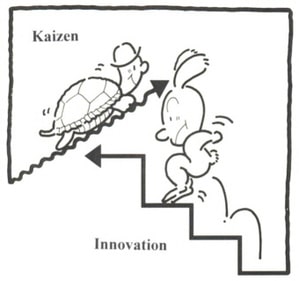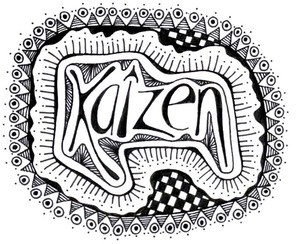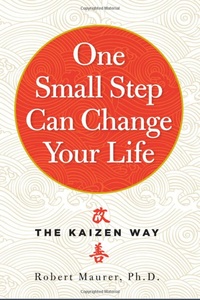 What is Kaizen and What Does it Mean to the Japanese?
What is Kaizen and What Does it Mean to the Japanese?
“Try not to become a person of success, but rather try to become a person of value.”
– Kaizen Quote
Kaizen is a extensive approach to tackle everyday issues leading to a successful project, business, campaigner or really anything you’re looking to do. In Japanese philosophy Kaizen (Kai means Good and Zen means Change) is an effort to constantly get better results from the work you do. It has its origin in post World War II when change became a key to productivity so as to rebuild the nation. A lot of this idea of kaizen stems from General McArthur (He helped draft and write the Japanese Constitution) and started when he couldn’t even make a simple phone call inside the country.
Articles Surrounding World War II:
Change doesn’t mean a change in efforts, but the mental approach to finding creative ways to do your daily job better overtime with small but meaningful changes to how you go about your tasks.
Kaizen is a real sense of accomplishing more in the same amount of time. According to Kaizen, investing time in finding new tools or ways of going about something through small but constant improvements is the core of what Kaizen is and why the Japanese find it so important in their lives. Kaizen means a lot to the Japanese, as most of the companies have adopted this philosophy to some degree to gain consistent development and growth.
Recommended Books on Kaizen:
[one_half_first]
[/one_half_first]
[one_half_last]
[/one_half_last]
Principles of Kaizen
Implementing Kaizen starts with these ideas:
- Change the way you think. (look outside the box – To other niches or things that don’t seem related)
- Be Active and go for alternatives while solving issues. (Again you can find solutions almost anywhere)
- Kaizen is always striving for better solutions slowly over time.
- Use the Iterative process, report mistakes and revise work.
- Stay Away from Assumptions.
- Communicate with others for more ideas and opinions. (seek people outside and inside your niche)
- Compare your results against the waste, time and effort spent.
- Go for a root cause while solving problem.
- Repeat, Repeat and Repeat the whole process again.
Although it seems Kaizen could be difficult, it really is just a state of mind anyone can begin to practice. Teams and Businesses use this strategy to modify and tweak their projects by finding failure and revising work with improved results. From Large Scale to Small Scale industry, everyone is benefiting from Kaizen. Toyota is the biggest example of using this philosophy to better themselves, their company and their products.
 Kaizen inside the Toyota Corporation
Kaizen inside the Toyota Corporation
Kaizen is implemented so well in Toyota that if anyone addresses errors in production, production stops! They work towards a solution for all the errors by taking suggestions from the employees, managers and board members, and find improved solutions comparatively. Various American Industrialists visited Toyota to discover how they are working so efficiently with less wastage and errors. They were amazed to notice every worker of the company has the ability to hinder the work process without the permission of their management teams. The reward for an employee who finds and fixes faults is rewarded and business keeps marching forward, leaner and meaner.
Sam Walton from Wal-Mart and Kaizen
I’m not sure if Sam Walton of Wal-Mart knew exactly this philosophy however I think he might have, because he visited Japanese grocery stores many times and got many good ideas from them. While there I’m sure he learned about it, because in his book “Made in America” the way he created Wal-Mart draws down the line of what Kaizen is so perfectly I’d be surprised if he didn’t know about it.
What to Practice Kaizen in Your Own Life?
Keep these things in mind and decide where you stand:
- Explore the multiple angles/alternatives of your day-to-day work.
- Check where and what consumes your time and energy the most.
- Make tiny frames to complete and analyze your work.
- Free your time to review what’s going on and how it can improve.
Conclusions:
In the end, Kaizen’s philosophy can prove productive for you, if you unlock your mind, find inaccuracies, execute multilevel solutions and rethink your work you’ll enjoy success in anything you attempt in your life.
-Nihon Scope




0 comments